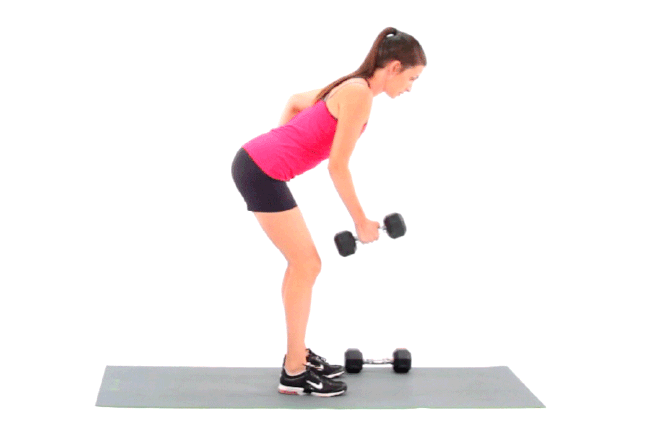What does fact checked mean?
At SportsRec, we strive to deliver objective content that is accurate and up-to-date. Our team periodically reviews articles in order to ensure content quality. The sources cited below consist of evidence from peer-reviewed journals, prominent medical organizations, academic associations, and government data.
The information contained on this site is for informational purposes only, and should not be used as a substitute for the advice of a professional health care provider. Please check with the appropriate physician regarding health questions and concerns. Although we strive to deliver accurate and up-to-date information, no guarantee to that effect is made.
The Correct Posture for One-Arm Dumbbell Rows

The one-arm dumbbell row is an exercise for the muscles of the back and arms, including the latissimus dorsi, rhomboids, middle trapezius, rear deltoids and biceps. The row is a pulling motion that is opposite to pressing exercises like the bench press. Rowing is important for muscular balance and upper back posture. If you want to perform a one-arm dumbbell row, you'll need to practice correct posture to avoid hurting yourself.
Starting Position
Start with your left knee and left arm on a bench, while your right leg is planted on the ground. Make sure your left and right legs are on the same line, your legs are under your hips and your arms are lined up with your shoulders. Point your hip bones straight down and make sure your torso is parallel to the ground. For a more advanced option, perform the one-arm dumbbell row in a bent over position. Stand with your feet hip width apart and bend forward until your torso is parallel with the ground.
Spine Position
Your spine should be in a neutral position during a one-arm dumbbell row. Sticking your chest out may help you achieve a neutral spine, but each person's neutral position is different. Find your neutral position by curving your back as much as you can, then arching it. Your spine will make the letter "U" as you arch it it and a "U" facing down as you curve it. Your neutral position is the midpoint between the two "U" positions. Failure to keep your spine neutral during a dumbbell row may result in injury. Keep your head in line with your spine, with your gaze fixed two feet in front of you
Scapular Position
Your shoulder blade is called your scapula and moves when your shoulder moves, enabling greater movement at the shoulder joint. Start the one-arm dumbbell row with your shoulder blade slightly retracted, meaning that it you are squeezing them towards each other like you are trying to hold a pencil between them. As you perform the row, your shoulder blade may release and retract during the pull or stay fixed, depending on your preference. Do not shrug your shoulders up and down.
Considerations
Tight muscles and poor movement mechanics may prevent you from achieving a neutral spine. Do not perform the one-arm dumbbell row unless you can achieve and maintain correct spine posture. Select other exercises for your upper body muscle groups while you perform supplemental exercises to develop proper spinal mechanics. Maintaining proper posture becomes more difficult as you become fatigued or increase the weight of the dumbbell. Do not increase sets, repetitions or weight if you are unable to maintain correct posture and stop immediately if you experience pain. Consult your doctor before beginning an exercise program.
References
Writer Bio
Lauren Saglimbene has been writing since 2004. She is a certified strength and conditioning specialist, certified personal trainer and certified yoga instructor. Saglimbene holds a Master of Science in strength and conditioning from Springfield College and a Bachelor of Science in biological sciences from the University of Hartford.
